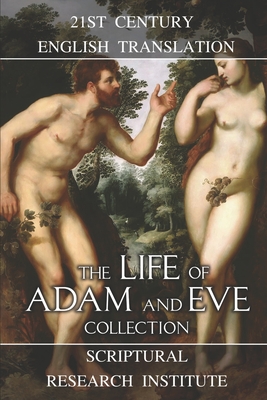The Life of Adam and Eve Collection

The Life of Adam and Eve Collection
The original version of the Life of Adam and Eve is believed to have been written in a Semitic language, as there as terms transliterated into the surviving Greek, Latin, Armenian, Slavonic, and Georgian versions from a Semitic language, however, it is not known positively which language as the original text is lost, and so far, no fragments have been found among the Dead Sea Scrolls that firmly be linked to it. The closest text discovered to date among the Dead Sea Scrolls would be the Genesis Apocryphon scroll, written in Aramaic and generally dated to between 37 BC to 50 AD. The original language was probably also Aramaic, as demonstrated by the use of the name Iah in the Apocalypse of Moses, which is found more commonly in Aramaic language books, like Tobit, as well as the transliteration of Belial (ბელადი) in the Book of Adam, which was generally found in Aramaic books. The unusual transliterations of the name of the Devil as Khatanay (Խատանայ), and the name of the archangel Ovel (Ովէլ) in the Penitence of Adam also support a Semitic language other than Hebrew, and the direct transliterations would have been Satana (Սատանա) and Uriyel (Ուրիել).The Greek Apocalypse of Moses is arguably the most influential of these texts, as it is likely the text that the apostle Paul referred to in 2nd Corinthians. A number of references circumstantially date the original work to the era when the Greeks ruled Judea, between 330 and 140 BC. The reference to Iah is itself evidence of a pre-Hasmonean origin, as the Hasmoneans' authorized' version of the Hebrew texts appear to have redacted Iah (יה) to Yahweh (יהוה) when they converted the Jews from the Canaanite (Samaritan/Paleo-Hebrew) script to the Assyrian (Hebrew) script. The name Iah (Jah) does show up in many ancient names, such as Josiah, and phrases such as Hallelujah, implying it was once widely accepted as the name of (a) God, however, virtually disappeared from the Hebrew scriptures at some point, likely during the Hasmonean redaction and standardization circa 140 BC.The longest surviving copy of the Life of Adam and Eve, is its namesake, the Latin Life of Adam and Eve (Vita Adea et Evae). This version was preserved by the Catholic Church, and copies were available to scholars in Western Europe earli
PRP: 154.92 Lei
Acesta este Prețul Recomandat de Producător. Prețul de vânzare al produsului este afișat mai jos.
139.43Lei
139.43Lei
154.92 LeiLivrare in 2-4 saptamani
Descrierea produsului
The original version of the Life of Adam and Eve is believed to have been written in a Semitic language, as there as terms transliterated into the surviving Greek, Latin, Armenian, Slavonic, and Georgian versions from a Semitic language, however, it is not known positively which language as the original text is lost, and so far, no fragments have been found among the Dead Sea Scrolls that firmly be linked to it. The closest text discovered to date among the Dead Sea Scrolls would be the Genesis Apocryphon scroll, written in Aramaic and generally dated to between 37 BC to 50 AD. The original language was probably also Aramaic, as demonstrated by the use of the name Iah in the Apocalypse of Moses, which is found more commonly in Aramaic language books, like Tobit, as well as the transliteration of Belial (ბელადი) in the Book of Adam, which was generally found in Aramaic books. The unusual transliterations of the name of the Devil as Khatanay (Խատանայ), and the name of the archangel Ovel (Ովէլ) in the Penitence of Adam also support a Semitic language other than Hebrew, and the direct transliterations would have been Satana (Սատանա) and Uriyel (Ուրիել).The Greek Apocalypse of Moses is arguably the most influential of these texts, as it is likely the text that the apostle Paul referred to in 2nd Corinthians. A number of references circumstantially date the original work to the era when the Greeks ruled Judea, between 330 and 140 BC. The reference to Iah is itself evidence of a pre-Hasmonean origin, as the Hasmoneans' authorized' version of the Hebrew texts appear to have redacted Iah (יה) to Yahweh (יהוה) when they converted the Jews from the Canaanite (Samaritan/Paleo-Hebrew) script to the Assyrian (Hebrew) script. The name Iah (Jah) does show up in many ancient names, such as Josiah, and phrases such as Hallelujah, implying it was once widely accepted as the name of (a) God, however, virtually disappeared from the Hebrew scriptures at some point, likely during the Hasmonean redaction and standardization circa 140 BC.The longest surviving copy of the Life of Adam and Eve, is its namesake, the Latin Life of Adam and Eve (Vita Adea et Evae). This version was preserved by the Catholic Church, and copies were available to scholars in Western Europe earli
Detaliile produsului










